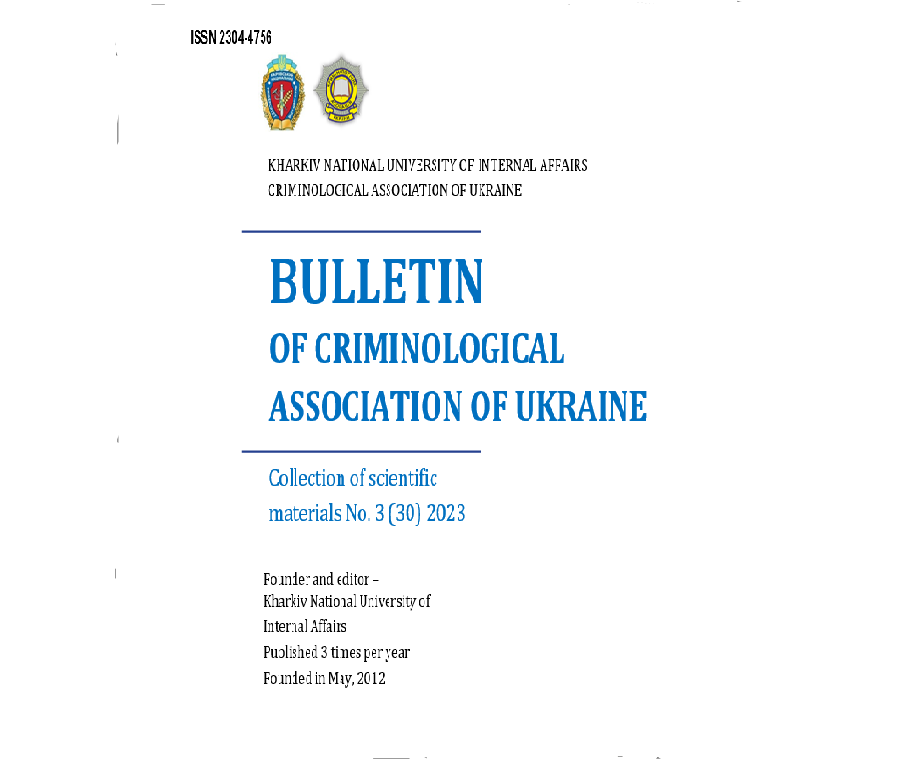COMPONENTS OF THE SUBJECT OF ENSURING LEGALITY DURING THE ADMINISTRATION OF JUSTICE
Main Article Content
Abstract
The article, based on the analysis of the scientific views of scientists, argues
that the subject is what is directed at, attention, the operation of the mechanism,
cognitive thought, etc., and therefore, it is the subject that reflects the material
component of a certain activity. An analysis of the norms of current legislation
was carried out, on the basis of which the key elements of the subject of ensuring
legality during the administration of justice were identified and characterized.
Attention is focused on the fact that as the subject of ensuring legality
during the administration of justice, maintaining law and order involves the use of
various administrative methods and organizational measures aimed at: 1)
ensuring strict compliance by entities belonging to the judicial branch of power
with the competence established by law; 2) preventing, deterring and terminating
offenses committed by officials of the judicial branch of power.
It is generalized that the subject of ensuring legality in the administration of
justice is of a complex nature and includes: 1) the independence of judicial
institutions and judges in the exercise of the powers assigned to them by the
Constitution and legislation; 2) openness and transparency of the functioning of the justice system, the impossibility and illegality of their concealment of
information and data that, according to the legislation, are of a public nature; 3)
the physical security of the judicial branch of government and judges; 4) a special
procedure for ensuring law and order in the activities of all personnel in the
sphere of justice. Active and high-quality work on the practical implementation of
each presented component of the subject generally allows for the formation and
maintenance of a high level of legality in the activities of judicial bodies, which
occurs through various administrative methods and organizational measures.
Article Details

This work is licensed under a Creative Commons Attribution 4.0 International License.
